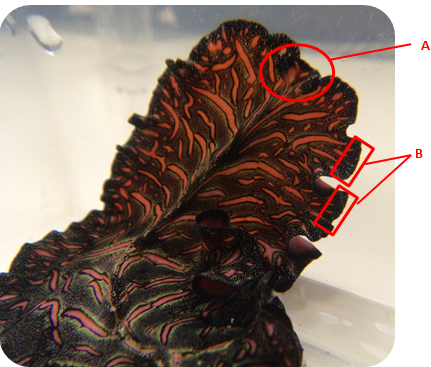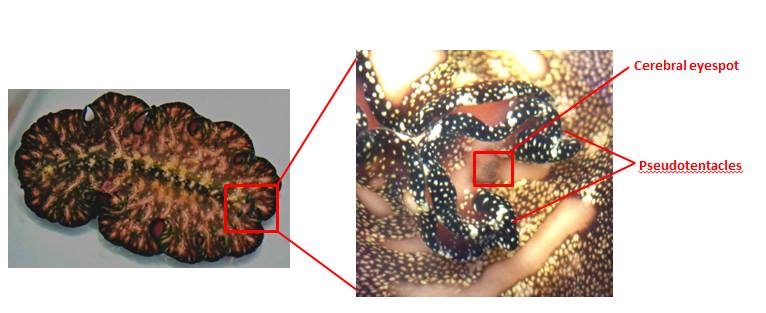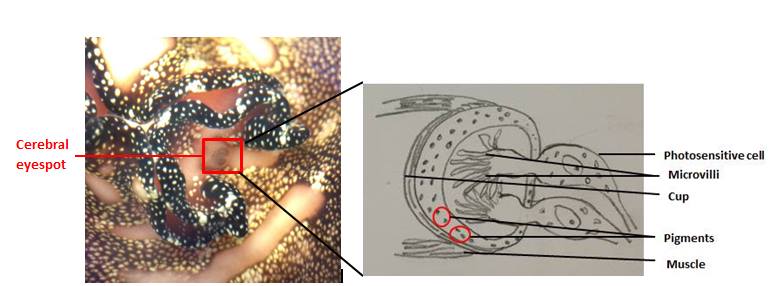Sensory System
A. Pseudotentacles
They have pseudotentacles on the head containing photosensitive and chemosensitive cells that transmit information to the anterior cerebral ganglion knot located on the dorsal anterior area ("head"). Unlike nudibranchs that have true tentacle; polyclads have tentacles that are simply outfoldings of the anterior margin of their body,hence the term “pseudo”-tentacles (false tentacles).
The dorsal surface of the flatworm is lined with papillae. Sensory cells also lie along the edges of their body.
B. Epidermal mechanoreceptors
They are found embedded throughout the epidermis, these structures respond to pressure.

Figure 1. Pseudotentacles and cerebral eyespot between pseudotentacles (A) and epidermal mechanocreceptors lining the margin to the flatworm (B).
C. Photosensitive cells
These eyes are sensitive to changes in light direction and intensity and form images according to shadows produced from surroundings. They sense their surroundings by changes in shadow pattern. As these creatures are mostly nocturnal, when they sense bright light they seek shade in dark places such as a rock crevice.
D. Pigment cup ocelli
Ocelli are part of the cerebral eyespot and are composed of several photosensitive cells and a concave cup. Mot macroturbellarians have eyes occurring in clusters over the brain, in tentacles and lining the body margin (Ruppert et al., 2004).The walls of the cup contain pigments to prevent light from entering. The light sensitive portions of the cells,microvilli, are arranged inside the opaque cup such a way that they can only be exposed by light from one single direction.
Depending on the angle of incoming light, shadows fall onto the photosensitive structures. Since the cup can be actively rotated by muscles, a change in shadow pattern is produced. Nervous signals are sent to the cerebral ganglion where the information is processed and used for three dimensional orientation and appropriate behavioural reactions.

Figure 2. The head region of P.bedfordi showing where the eyespots are located:
Pseudotentacles and cerebral region

Figure 3. Close-up view of the structure of the pigment cup ocellus made up of photosensitive cells
D. Chemosensory organs
As it has poor visual senses, it relies mostly on chemosensory detectors. Chemoreceptors on the pseudotentacles are thought be responsible for sensing food as well as mating partners. Specific chemicals that are released from food or mating partners float through the water and are sensed by chemoreceptors on their pseudotenacles.
E. Nervous System
Flatworms have a central nervous system that forms a diffuse, net-like nervous system and a specialized nerve net is also associated with the
muscular pharynx of some turbellarian species.( Ruppert et al., 2004).

Figure 4. Polyclad nerve net system (Drawing adapted from Ruppert et al., 2004)